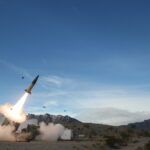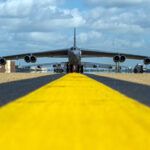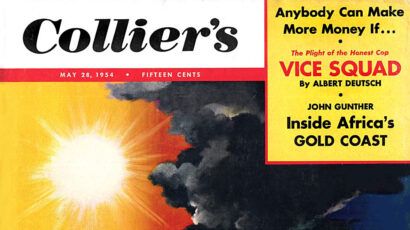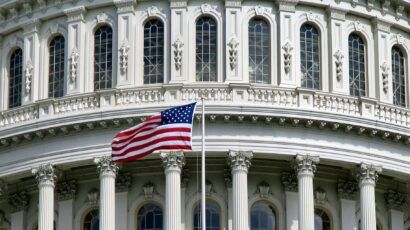Say goodbye to the Iran deal and hello to a “polynuclear” Middle East
By Ezra Friedman | May 8, 2018
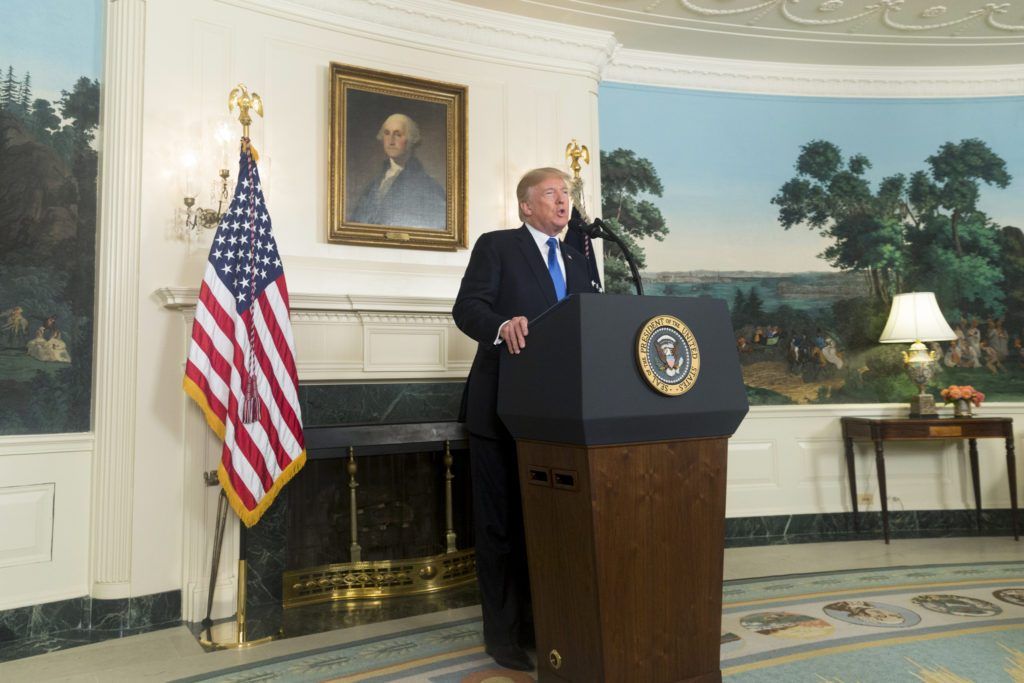
Today President Donald Trump is expected to announce the United States’ withdrawal from the 2015 landmark Obama-era international agreement called the Joint Comprehensive Plan of Action (JCPOA), also known as the Iran nuclear deal, negotiated by the five permanent members of the United Nations Security Council, the European Union, and Iran. The JCPOA is widely acknowledged to be a flawed agreement, and Iran has been known to be duplicitous about its weapons program in the past, but inspections have turned up no significant violations since the agreement went into effect.
European officials, including the German and French heads of state, have tried to save the deal and address Trump’s concerns about Iran’s increasingly potent ballistic missile program, and about the JCPOA sunset clauses—which include major, albeit temporary, restrictions on centrifuges, research and development, and stockpiling of low- and medium-enriched uranium within Iran itself. Trump has also taken issue with the limited access to nuclear sites for International Atomic Energy Agency (IAEA) inspectors and has pushed for more intensive and intrusive inspections to verify compliance. The hope was that, by addressing Trump’s concerns, the international community would be able to persuade the president to sign the sanctions waiver that would preserve the nuclear agreement and in turn keep Iran’s nuclear program in check. However, it seems that the European diplomatic offensive has failed.
Trump is making a mistake, as reinstituting sanctions and withdrawing the United States from the nuclear deal only rolls back the clock to a pre-JCPOA scenario in which Iran’s nuclear program could move forward at full force. That scenario may lead to an Iran that is still a party to the Nuclear Non-Proliferation Treaty (NPT) but has enough highly enriched uranium to be considered a nuclear threshold state—one that requires only a short “breakout time” to produce enough weapons-grade fuel for one nuclear weapon. Other Middle Eastern countries would eye such a scenario with extreme worry and would likely begin to develop their own nuclear programs at an accelerated rate in response. The result could be a region with several nuclear-armed or nuclear threshold states: a “polynuclear” Middle East.
A “what if” exercise. A recent simulation conducted jointly by the Tel Aviv-based Institute for National Security Studies (INSS) and the RAND Corporation, and a subsequent report that I co-authored along with Sima Shine and Ari Heistein, confirm that a US withdrawal will likely lead to increased instability. The simulation presents a scenario in which the demise of the JCPOA is all but certain. The results suggest that the lack of an American strategy for the “day after” the termination of the agreement will do more harm than good to current and future non-proliferation efforts in the Middle East. If the current trajectory of events continues, it will likely result in the proliferation of nuclear technology and programs in the region that could very easily lead the world down a road of no return, in which a polynuclear Middle East—one with not just one or two but potentially several nuclear-armed states—may become a reality.
Trump’s decision will likely have far-reaching consequences. While all other parties to the JCPOA wish to see its continuation, the departure of the United States—particularly if it imposes nuclear-related and (at a later date) severe secondary sanctions on Iran—would in effect not only neutralize but obliterate the nuclear deal. The United States’ European allies would be forced to follow Washington’s lead or face sanctions themselves. The subsequent economic fallout would probably cause Iran to resume work on its nuclear program, which in turn would lead to a pre-JCPOA scenario: IAEA inspectors would be granted only limited access to Iran’s nuclear sites; Iran would completely disregard the (no longer relevant) sunset clauses; and enrichment of military-grade uranium on Iranian soil would resume. This could set off a domino effect in other countries across the region that already see Tehran as a threat, prompting them to expedite their own nuclear programs.
The Saudi reaction. Sunni Arab states in the region are watching the current situation unfold with serious concern and will likely pursue more active nuclear programs that would include the production of nuclear fuel, an essential ingredient to producing nuclear weapons. Saudi Arabia, Iran’s regional archrival, has repeatedly warned that it would not accept a nuclear-armed Iran, and would pursue a nuclear weapons program if Iran does so. While some put such talk down to rhetoric, Saudi Arabia is aggressively pursuing a civilian nuclear energy program within the framework of the NPT, and plans to build 16 nuclear reactors within the next quarter-century. The Saudis are currently negotiating with the United States in an attempt to gain the right to enrich uranium on their own soil, including the right to produce and reprocess domestic nuclear fuel, a crucial part of the nuclear fuel cycle needed for a weaponized nuclear program. This is all much to the chagrin of the United States, which is attempting to take advantage of lucrative economic opportunities in the region while also ensuring that any nuclear cooperation agreements with other countries meet nonproliferation conditions mandated by US law.
A Saudi ally, the United Arab Emirates (UAE), currently has the most advanced nuclear program in the Arab world. The UAE’s first of four Korean-built nuclear reactors was recently completed, made possible by the country’s 2009 “123 Deal” with the United States, which required the UAE to forgo domestic uranium enrichment and reprocessing of spent fuel. However, the recent developments regarding the JCPOA are placing those restrictions under increasing pressure, with UAE officials publicly questioning their viability. These officials are openly discussing their willingness to share their nuclear know-how, technology, and expertise with Turkey (a non-Arab Sunni state), Jordan, and Egypt—states with budding nuclear programs and large nuclear ambitions to match. Sunni Arab states already feel threatened by the rise of Iran, so it is not hard to imagine that anything that would shorten Iran’s potential breakout time might push them to seek parity within the nuclear realm.
The Israeli reaction. Israel is extremely worried about the potential for a nuclear-armed Iran and is willing to put a viable military option on the table in response. This is not to say that Israel is pursuing conflict with Iran, but the 1981 “Operation Opera” bombing of a French-built nuclear plant near Baghdad and the recently declassified 2007 Israeli strike on Syria’s nuclear facilities make it clear that Israel sees a nuclear-armed state in the region as an existential threat to its existence, and is not afraid to act accordingly.
While the recent high-profile Israeli intelligence operation that smuggled documents out of Iran confirmed that Iran currently is not pursuing a nuclear weapons program, it also established what can happen when a state with a developed nuclear infrastructure and decades of experience defies the international community and flouts international agreements to achieve its national aspirations, even if that means the pursuit of nuclear weapons.
An American alternative. Trump would do well to reconsider his decision. The JCPOA was designed in its current form because Iran could not, and cannot, be trusted. The deal therefore provides the necessary framework of safeguards to keep Iran’s nuclear ambitions in check.
The results of the INSS simulation suggest that Trump should not pursue a zero-sum game; instead he should leverage his very real threat to withdraw from the JCPOA to gain Iranian concessions on the crucial issues via the Europeans and Russians, either improving the nuclear agreement or negotiating additional agreements to complement it. Such a move by the administration would reassure the United States’ allies in the region, thereby avoiding not only nuclear proliferation but also potential conflict resulting from the collapse of the JCPOA. Trump’s current course of action will place an already unstable region, characterized by conflict and authoritarian regimes, on the verge of nuclearization.
Together, we make the world safer.
The Bulletin elevates expert voices above the noise. But as an independent nonprofit organization, our operations depend on the support of readers like you. Help us continue to deliver quality journalism that holds leaders accountable. Your support of our work at any level is important. In return, we promise our coverage will be understandable, influential, vigilant, solution-oriented, and fair-minded. Together we can make a difference.
Topics: Analysis, Nuclear Energy, Nuclear Risk, Nuclear Weapons



